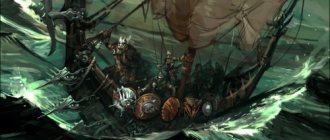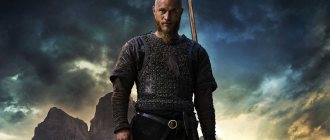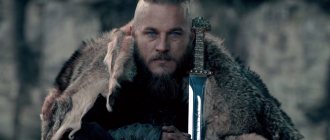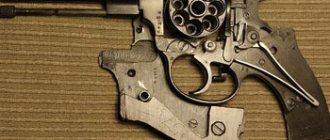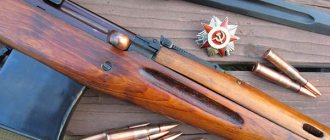A Viking who never knew defeat. A military leader who managed to gather a huge army by the standards of the 9th century. The leader of the pirates, whose success was largely facilitated by the historical situation. A pagan who conquered Christian England, significantly expanding the Danish possessions. All these epithets and characteristics refer to one of the most famous leaders of the Scandinavian Vikings, Ivar the Boneless.
Worthy son of a worthy father
Before writing about such a bright character in the history of Scandinavia as Ivar Ragnarsson (the Boneless), it would be fair to remember his no less famous father, Ragnar Lothbrok. Being a king and a son of a king, Ragnar was famous not only for his brilliant military achievements, but also for his large number of sons, one of whom was Ivar. The ardent pagan raised his children as real Vikings, for whom the main thing in life is the fight against the Christian world and robberies, as evidenced by the content of “The Saga of Ragnar and His Sons.” It was in the 9th century that the peak of the bloody and destructive activity of the Scandinavians in Europe occurred. The main objects of their close attention at that time were Britain and France. Like Ragnar, Ivar the Boneless devoted his entire life to campaigns, but, unlike his father, he did not start a family and left no heirs.
Ragnar Lothbrok
Leif Eriksson
Leif is a famous Scandinavian navigator, the son of Eric the Red. It is believed that it was Leif who became the first person to land on the American continent five centuries before the expedition of Christopher Columbus. Today in Reykjavik there is a monument to Leif, on the pedestal of which it is written: “discoverer of America,” however, from a historical point of view this is not entirely true.
If you believe the documents, then around 985 or 986, another Scandinavian navigator Bjarni Herjulfssen, heading from Iceland to his parents, who that year decided to go to Greenland, lost his course due to a storm. And since he had neither a map nor a compass, he sailed at random. Far to the west he discovered forested hills that looked habitable. Wanting to quickly get to his parents, Bjarni did not land on these lands, but only spoke about them in Greenland and Norway, but no one was interested in his story.
16 years later, around the year 1000, Leif Eriksson, having learned from Bjarni about uncharted lands in the west, bought a ship from him, gathered 35 crew members and sailed to unknown shores. The expedition turned out to be quite successful. They discovered and explored three regions of the American coast: Helluland (probably Baffin Island), Markland (presumably the Labrador Peninsula) and Vinland (possibly the coast of Newfoundland).
Ivar is a warrior of the highest category
On the battlefield, the Viking appeared under the flag of his late father, on the banner of which a black carrion raven was depicted. This symbol was used to intimidate the enemy. One of the Vikings' favorite military tactics was the so-called "shield wall", thanks to which they were in a kind of mobile fortress. The army fought as a single organism - each warrior defended his comrade-in-arms and avenged the death of a comrade as if he were killing his own brother.
Contemporaries and descendants considered Ivar a berserker - a warrior of the highest category, who was distinguished by determination and did not pay attention to wounds. He attacked his enemies with a loud, furious roar that caused them to panic. Little is known about the life of berserkers. First of all, because this information was not available to ordinary people even in those distant times. And the scraps of information that have survived to this day have managed to acquire many embellished, or even completely fictitious, details. For example, historical references contain information that each of the berserkers was able to cut the enemy in half with a single blow of an ax, uproot a tree and even swallow several hot coals.
The nickname of the famous Viking leader also testifies to his great dexterity on the battlefield. Although, according to some historians, he was called “Boneless” because of an unknown disease. They suggest that Ivar could not move on his own and did it either with the help of his comrades or by crawling. It was the second version that the creators of the Vikings series adhered to. As for the name Ivar, it consists of 2 parts, meaning “battle bow” and “warrior”.
Ivar was characterized by extraordinary instability and temper. Thus, the scene where he kills his brother Sigurd the Snake-Eyed with an ax, although not confirmed by historical sources, was quite true. It perfectly conveys the violent and capricious nature of our hero.
Biography
Ivar the Boneless is the greatest warrior and legendary leader of the Scandinavian sailors, played by Danish actor Alex Hegh Andersen, who was remembered for his original hairstyle in the TV series “Vikings.”
Actor Alex Hoeg Andersen as Ivar the Boneless
They also often talk about the scene in the series where Ivar killed Sigurd's brother, but, according to the saga, Sigurd Snake-Eyes died in battle with King Ernulf. According to legend, Ivar was distinguished by unprecedented cruelty and bloodthirstiness in battles. Such people were also called berserkers, that is, those who dedicated themselves to God Odin.
Where it all began
The first large-scale military campaign in the biography of Ivar the Boneless was his revenge for the death of his father, who in 865 was brutally executed by order of King Ella II of Northumbria: Ragnar was thrown into a pit filled with poisonous snakes. Having learned the sad news, Ivar, together with his brothers Ubba and Ragnar, left their native Denmark. They managed to assemble a squadron of four hundred longships, which carried about five thousand people. On the scale of the 9th century, such a number was considered enormous. From the outside, the movement of the army resembled the Great Migration, during which the Anglo-Saxons left mainland Europe to settle in Britain.
The Vikings made their first raid on the city of Kent, the second on the island of Tenet, after which they headed to East Anglia, ruled by King Edmund. Local residents, having survived the devastating invasion of the pagans, realized with horror that this Danish raid was not an isolated phenomenon. The uninvited guests did not even intend to leave the borders of England.
A reliable fleet is one of the conditions for military success
The children of Ragnar believed in their strength, in the favor of the pagan gods and in their fleet, which is worth talking about in more detail. The Danish ships, thanks to their unique design for their time, perfectly navigated both deep, rough seas and shallow waters. Therefore, Ivar Ragnarsson was able to transport loot along river beds on his boats even from the middle of Britain. In addition to high technical characteristics, the Danish fleet could boast of its unusual appearance. Drakkars were decorated with wooden figures of dragons and other idols, which were entrusted with the function of driving away evil spirits and intimidating enemies.
How did Ivar manage to gather a large army?
Ivar and his brothers' motives for going to Britain are clear. But what reasons forced such a large army to follow the heirs of the executed Ragnar, and why at a later stage its ranks were replenished with new supporters? Here it is worth drawing the reader’s attention to the historical fact that in the 9th century, after a protracted crisis caused by the fall of the Western Roman Empire, trade began to develop noticeably in Europe. A large amount of silver and various goods rushed to this part of the world. Many merchant cities were built, incl. and Lundevik (modern London). The lack of reliable fortifications in such rich settlements could not help but attract many people who wanted to profit.
Political reasons
The thirst for revenge and the possibility of easy enrichment are not all that forced the Vikings to head to the shores of Britain. Throughout the 9th century, Denmark experienced confrontation between the kings and the Viking military leaders. The monarchs demonstrated a desire to take control of the invasions, and the freedom-loving bandits opposed this. Thus, in 854, pirates killed King Horik I, who had signed a peace treaty with the French monarch, which became an obstacle for the Vikings planning campaigns against this state. After the death of the king, Denmark was without power for many years, which means that the sea robbers could do whatever they wanted. Ragnar himself, along with other Vikings, took advantage of this opportunity, and after his death, the baton was taken up by his heirs, who managed to unite a huge number of supporters around themselves.
Fortified pier for ships.
As it turned out, the Viking camp was located around a Christian church that stood in this place back in pre-Viking times. The church was located on the river bank in a very important place, at the intersection of trade routes, and was built in a place convenient for defense - on a high hill. The invaders only needed to slightly strengthen the territory, which was done.
Using the stone structure as a stronghold, the Vikings dug a V-shaped ditch about 4 meters deep to the right and left of it, using the earth to create a rampart on which it is believed the palisade was placed. The defensive structure descended to the river bank, providing a completely safe anchorage for ships. The total length of the shaft was about 500 meters, the area was about 15,000 sq.m.
Reconstruction of a fortified Viking camp. Below you can see the site of a mass grave (more about it below).
Archaeologists suggest that the fortified camp was too small to house the entire Viking army, but more than sufficient to protect 50 to 100 ships pulled ashore for the winter. The camp itself (up to 2,500 people, if you count by the number of ships) was located nearby.
And this is indicated by both random finds and found burials (for example, in 1839, not far from the site of the camp, a type L sword according to Peterson was found).
A sword found by chance at the camp site.
Implementation of global plans
In 866, the Vikings who were “cleansing” France, and the robbers who had “worked” in other countries, heard a rumor that Ivar the Boneless had created a stronghold in East Anglia, where pagans from all over Scandinavia rushed. The leader was not tempted by the grandiose trophies of his brothers, thanks to which he could live comfortably until old age, and he was not frightened by the approaching winter. The Viking was planning something bigger. Ivar Ragnarsson developed a detailed plan while still at home. He decided to mount his warriors on horses, which, upon arrival in East Anglia, were taken from the local population. Thanks to this idea, the newly minted cavalrymen were able to quickly move through unfamiliar terrain. When they got to the battlefield, they dismounted and stood in formation, shield to shield, as usual.
At that time, England consisted of 7 kingdoms, which were not on the best terms with each other. And when the country was attacked by external enemies, the kingdoms tried to unite their efforts, although this did not work out well. Northumbria also suffered from civil strife. It was on the orders of its last ruler that Ragnar Lothbrok was killed. As they say, the gods themselves ordered Ivar to begin his offensive precisely from Northumbria. Firstly, this kingdom is weakened and unable to provide worthy resistance, and secondly, the Viking leader was in a hurry to take revenge on Ella II for the death of his father as soon as possible.
Harald III the Severe
King of Norway 1046-1066. For several years from 1031 to 1044, Harald served in Rus' with Yaroslav the Wise, and then in Byzantium in the Varangian Guard. After his accession to the Norwegian throne, Harald attempted to conquer Denmark in a long and bloody war, which ended in vain. Later he had a little war with Sweden. And in 1066, Harald the Severe, at the head of a 15,000-strong Norwegian army, landed on the shores of England with a claim to the English throne. On September 20, he successfully defeated the first British troops he encountered. But after 5 days, in the Battle of Stamford Bridge, near the city of York, against the army of the King of England Harold Godwinson, Harald the Severe was killed. And it was with his death, on September 25, 1066, that the three-century period of armed expansion of the Scandinavian rulers, which we know as the Viking Age, ended.
First victory and sophisticated revenge
On November 1, 866, while the entire Christian world was celebrating All Saints' Day, an army of ten thousand men led by the Danish Viking leader Ivar invaded Northumbria. The lords did not take any measures in advance and were unable to unite their efforts after the attack of such a large army. Therefore, their resistance did not become an obstacle on the way of the robbers. Both kings had to flee. Ivar with his brothers and army entered Jorvik (modern York), where they stayed for the winter to prepare for the seizure of new English lands.
Capture of the city of Jorvik
With the arrival of spring, the Vikings were in for an unpleasant surprise. Ella and Osbert, who fled, joined forces and attacked Jorvik on Palm Sunday. Initially, they were lucky, but after breaking into the city they found themselves surrounded by numerous Danes. Both kings were executed. Ella faced a sophisticated punishment for the death of Ragnar: in front of the Viking army, he was sacrificed to the pagan god Odin in the form of a “blood eagle.” This ritual involved ripping open the chest, followed by tearing out the lungs and cutting out “wings” from the skin of the back.
The further fate of the leader and his army
Having conquered Northumbria, Ivar ceded the throne to his puppet Egbert, and he and his army went to Mercia. The Vikings didn't have to fight. The leader, using the tactics of his illustrious ancestor, agreed to peace for a huge ransom, after which he returned with the army to Jorvik.
As evidenced by the fragmentary biography of Ivar the Boneless, the Viking leader's next target was East Anglia. Since King Edmun did not follow the example of Egbert of Northumbria and refused to become a vassal of the pagans, his kingdom was also conquered, and the monarch himself was brutally executed. Edmun, whom the robbers made a target for arrows, is today one of the most revered English martyr saints.
Little is known about the later life of Ivar the Boneless. There is information that after the victory over East Anglia, the Scandinavian army was divided into two troops. One of them set out to conquer new British kingdoms, and the other, led by Ivar, sailed to Ireland. Previously, the Irish lands were easy prey for the Vikings, but over time, the peaceful natives mastered military techniques, which the Vikings did not expect. The outcome of that fight, as well as the details of the further life of the leader of the Danes, are unknown.
Viking wives
In addition to bravery and luck in the robber trade, Ragnar was distinguished by enviable fertility. The king's intimate life was very eventful. He married three times and regularly shared his bed with numerous concubines. Lodbrok's first legal wife was named Lagertha. This female warrior, who owned lands in Norway, was famous for participating in battles on an equal basis with men, where she was cut knee-deep in blood. She bore Ragnar two daughters and a son. The second wife of the legendary Dane was the beautiful Thora, daughter of King Herot from the island of Gotland. Tora gave her husband two sons and died of illness. It’s worth talking in more detail about Ragnar’s third chosen one. The parents of the Aslaug saga are called the famous Sigurd, who killed the dragon, and the Valkyrie Brunnhilde, who was demoted to mere mortals by Odin for disobedience. The four sons she gave birth to were simply doomed to become heroes. At least three more sons and a daughter were born to concubines, whose names are not mentioned in the legends.
The death of Ivar and the legend associated with it
The life of Ivar the Boneless was cut short in 873 under unknown circumstances. For many years, the world did not know where the famous Viking, who bore such an eloquent name, was buried. And only in the 17th century, a farmer from the city of Repton accidentally found an ancient burial place, which many years later historians recognized as the grave of the medieval berserker Ivar. In the Scandinavian sagas there are many legends about the death of the legendary Danish commander and about his relics. According to one of them, the son of the great Ragnar Lothbrok bequeathed to his comrades to arrange his bedchamber in Northumbria, so that even after death he could inspire his brothers to defeat a variety of enemies. And indeed, the invasion of England by King Harald ended in defeat. But William the Conqueror acted smarter: when he arrived in Britain in the middle of the 11th century, he first destroyed the grave, thus removing the invisible talisman from the state he had set his sights on. Perhaps it was this ritual that helped the Norman conquer all of England.
Personal life
The whole meaning of the life of the eldest son of King Ragnar was in bloody wars and constant raids on new territories. Therefore, there was no talk about children and love. Boneless was extremely cruel and had a hot temper, so this is another reason why the berserker did not get a wife and did not continue offspring.
Ivar the Boneless's hairstyle
Although other sources, which were compiled by the kings of the medieval kingdom of Dublin, suggest that the Boneless One still had a pedigree.
